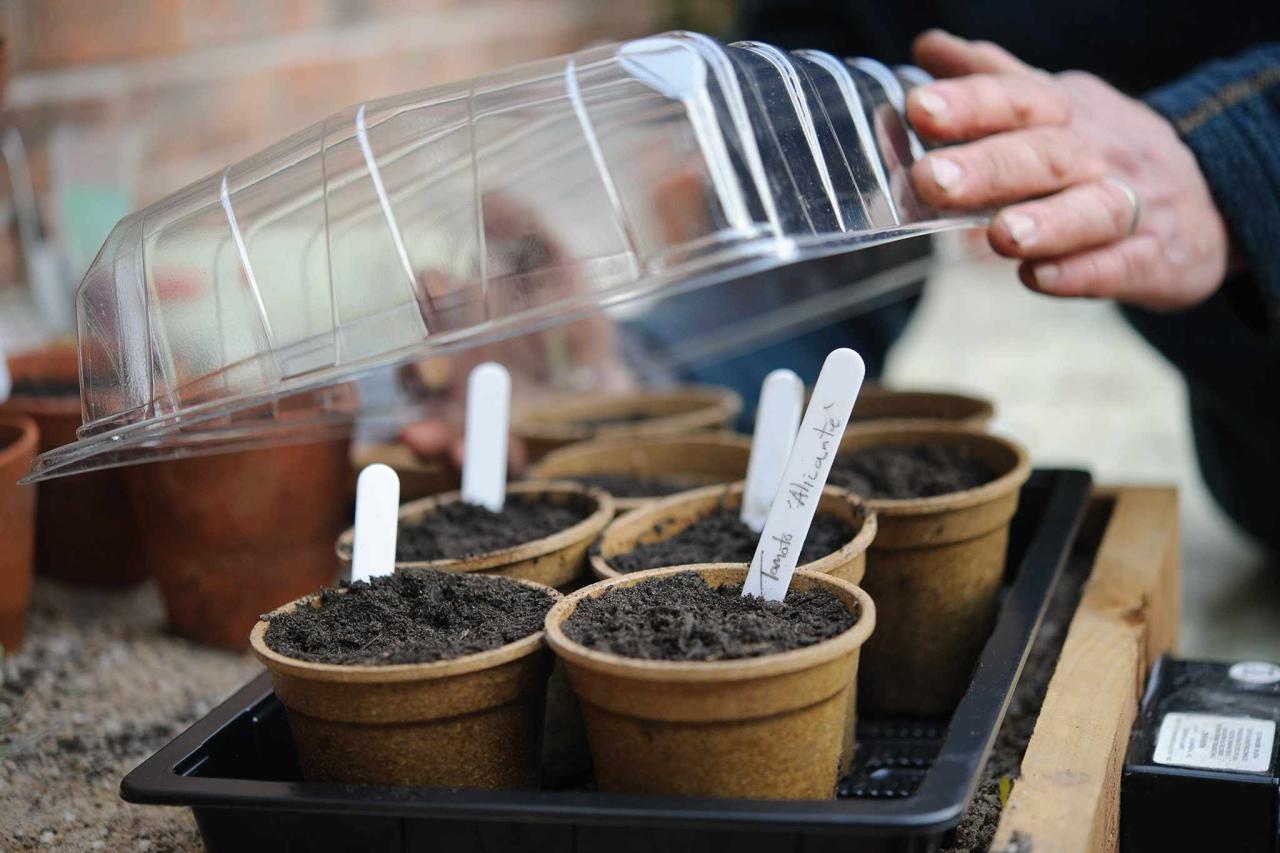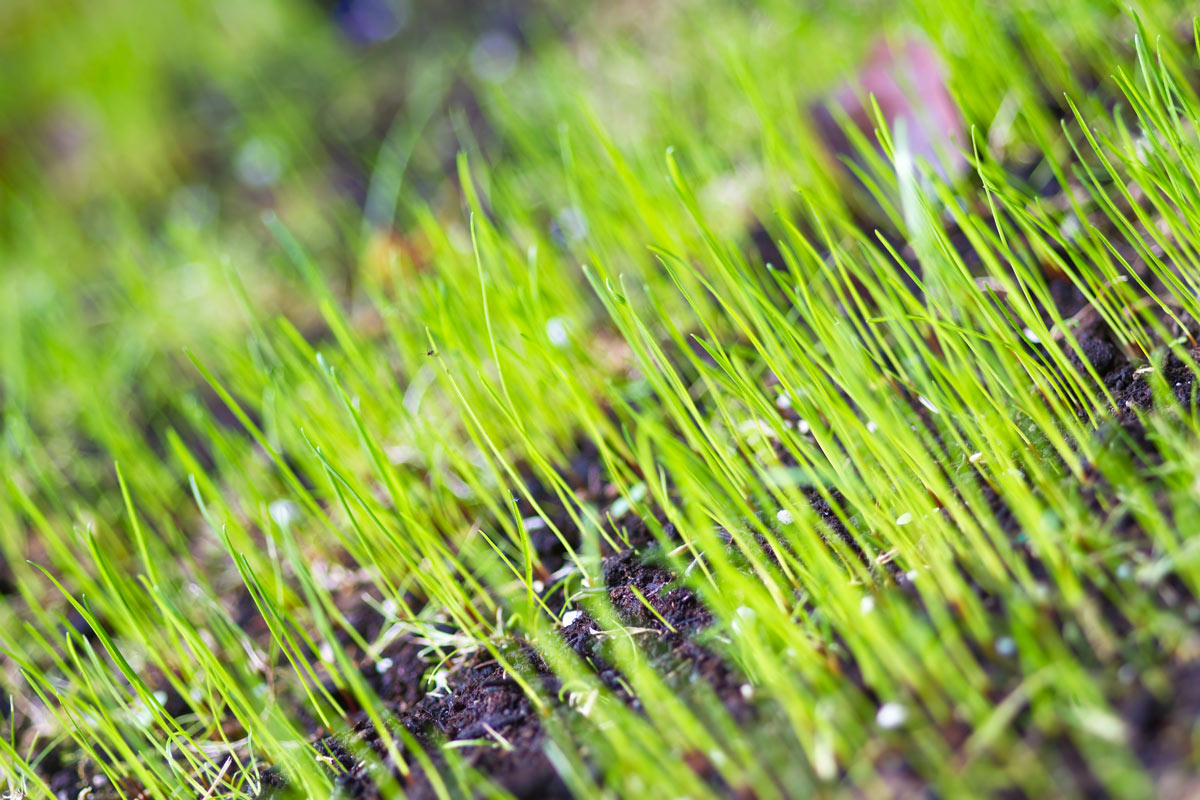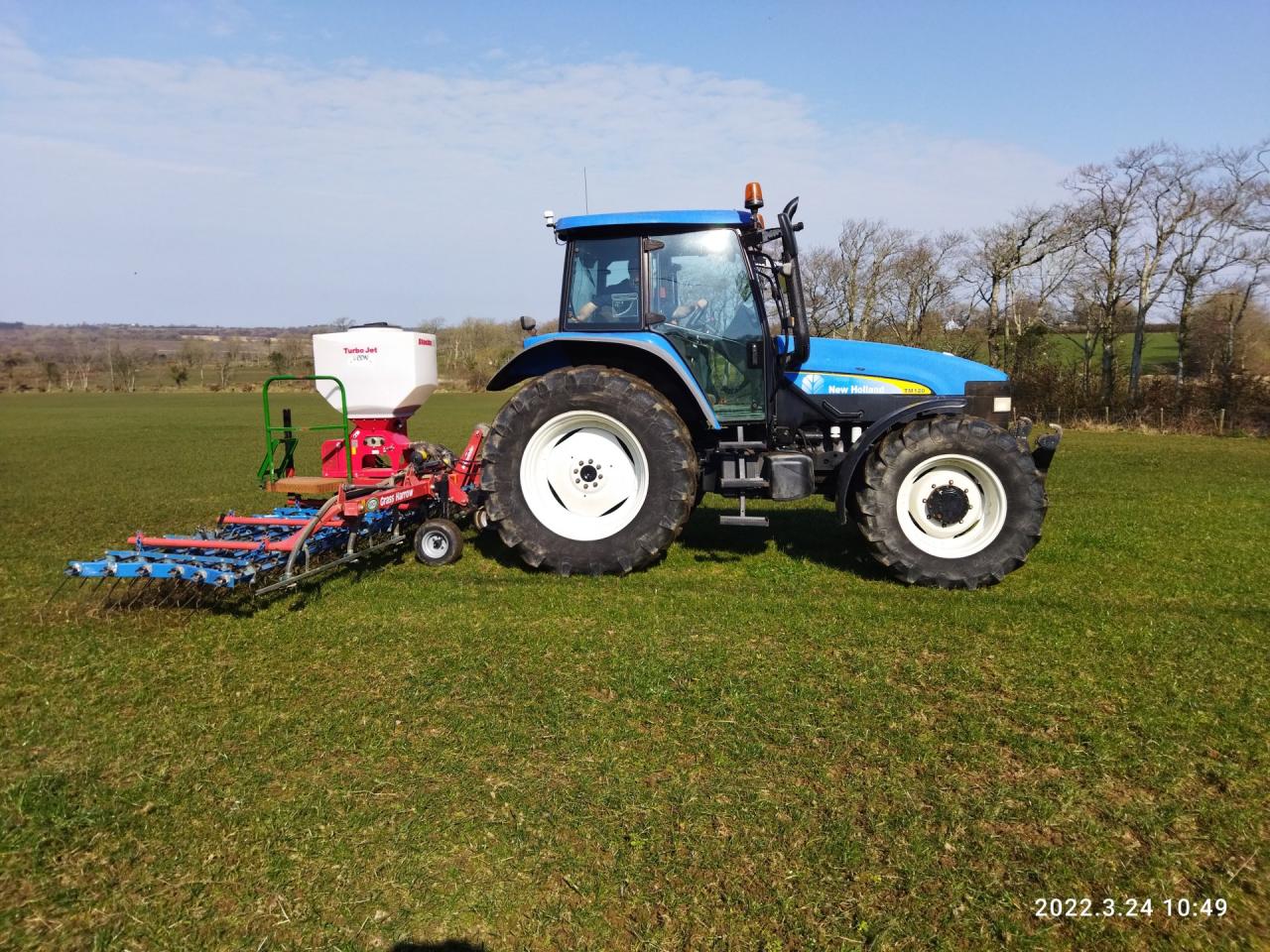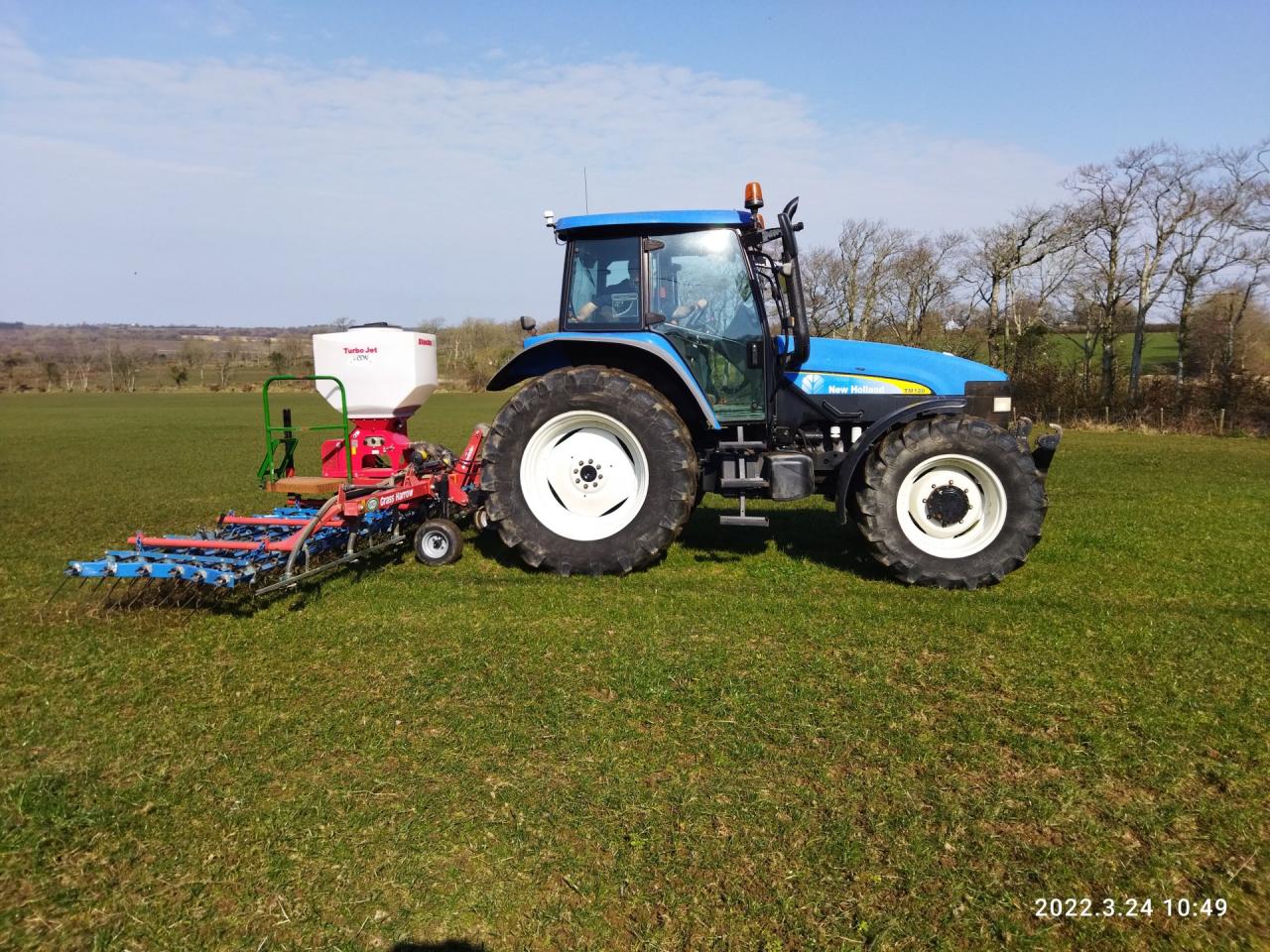How to Achieve the Best Results by Timing Your Grass Seed Sowing in the UK is a crucial question for any homeowner seeking a lush, vibrant lawn. The UK’s climate, with its varied temperatures, rainfall, and sunlight, plays a significant role in grass seed germination success.
Understanding the optimal sowing periods and preparing the soil accordingly are key to achieving a thriving lawn.
From choosing the right grass seed variety to mastering sowing techniques and providing proper post-sowing care, this guide will equip you with the knowledge and tools to achieve a lawn that stands the test of time.
Understanding UK Climate and Grass Seed Germination

The success of your lawn depends on the right timing for sowing your grass seed, and understanding the UK climate is key to achieving optimal results. The UK’s climate is known for its temperate weather, but there are still significant variations in temperature, rainfall, and sunlight throughout the year, all of which play a crucial role in grass seed germination.
Impact of Temperature, Rainfall, and Sunlight on Germination
The UK’s mild climate generally allows for two main sowing seasons: spring and autumn. However, understanding the impact of temperature, rainfall, and sunlight on grass seed germination is essential for choosing the best time to sow your lawn.
Temperature
- Most grass seed varieties germinate best in temperatures between 15°C and 25°C (59°F and 77°F).
- In the UK, these ideal temperatures are typically reached in spring (April-May) and autumn (September-October).
- During the summer months, the soil temperature can become too hot, hindering germination and potentially damaging young seedlings.
- In winter, temperatures are often too low for germination, although some varieties are specifically designed for winter sowing.
Rainfall
- Consistent rainfall is crucial for successful grass seed germination, as it provides the moisture needed for the seeds to sprout.
- However, excessive rainfall can wash away the seeds or lead to waterlogging, which can hinder germination.
- The ideal scenario is a period of moderate rainfall followed by a few days of dry weather to allow the soil to dry out slightly, creating ideal conditions for germination.
Sunlight
- Most grass varieties need at least 6 hours of direct sunlight per day to germinate and thrive.
- However, some shade-tolerant varieties can tolerate lower levels of sunlight.
- When choosing your grass seed, consider the amount of sunlight your lawn receives and select a variety that is suitable for your conditions.
Ideal Temperature Range for Different Grass Seed Varieties
The ideal temperature range for germination can vary slightly between different grass seed varieties. Here are some general guidelines:
Grass Seed Variety |
Ideal Temperature Range (°C) |
|---|---|
Perennial Ryegrass |
15-25 |
Fine Fescue |
10-20 |
Kentucky Bluegrass |
15-25 |
Bentgrass |
15-25 |
Best Time to Sow Grass Seed in the UK: How To Achieve The Best Results By Timing Your Grass Seed Sowing In The UK
The optimal time to sow grass seed in the UK depends on the specific type of grass seed you are using and the prevailing weather conditions. Generally, spring and autumn are considered the best times for sowing, offering a balance of favorable temperatures and moisture levels.
However, it is essential to consider the specific characteristics of your chosen grass seed and the prevailing climate to achieve optimal germination and establishment.
Optimal Sowing Periods for Different Grass Seed Varieties
The timing of grass seed sowing can influence its success, with different grass types having distinct germination preferences.
- Cool-season grasses:These grasses, commonly found in UK lawns, thrive in cooler temperatures and are best sown in early spring (March-April) or autumn (September-October). Popular examples include perennial ryegrass, fescue, and meadow grasses.
- Warm-season grasses:These grasses prefer warmer temperatures and are best sown in late spring (May-June) or early summer (July). Examples include Bermuda grass, zoysia grass, and St. Augustine grass.
Advantages and Disadvantages of Sowing Grass Seed in Different Seasons
Spring Sowing
- Advantages:Warmer soil temperatures promote faster germination, and the longer days provide ample sunlight for growth. The risk of frost damage is reduced, allowing for a stronger establishment.
- Disadvantages:Competition from weeds can be intense, requiring more frequent weeding. The risk of drought can impact germination and establishment, especially during hotter summers.
Summer Sowing
- Advantages:The warm soil temperatures and ample sunlight can promote rapid growth. Summer sowing can be ideal for repairing damaged areas or establishing new lawns in warmer climates.
- Disadvantages:Germination and establishment can be challenging due to the intense heat and potential drought conditions. Water requirements are higher, and competition from weeds can be significant.
Autumn Sowing
- Advantages:The cooler temperatures and increased rainfall provide optimal conditions for germination. The soil is still warm enough for root development, and the risk of drought is reduced. The cooler temperatures can also suppress weed growth, providing a competitive advantage for the new grass.
- Disadvantages:The shorter days limit the amount of sunlight available for growth, and the risk of frost damage can be a concern, especially in colder regions. Germination may be slower due to the cooler temperatures, and the grass may not be fully established before winter.
Importance of Soil Temperature and Moisture Levels, How to Achieve the Best Results by Timing Your Grass Seed Sowing in the UK
Optimal soil temperature and moisture levels are crucial for successful grass seed germination.
Ideal Soil Temperature:The optimal soil temperature for most grass seed varieties is between 10°C and 20°C (50°F and 68°F).
Moisture Levels:Consistent moisture is essential for seed germination. The soil should be moist but not waterlogged.
Preparing the Soil for Grass Seed Sowing
A well-prepared soil is crucial for successful grass seed germination and establishment. This involves several steps to create an ideal environment for your new lawn.
Soil Testing
Understanding the composition of your soil is essential to determine the necessary amendments. A soil test can reveal the pH level, nutrient content, and potential issues like compaction. This information guides your approach to preparing the soil for optimal grass growth.
Weeding
Existing weeds compete with grass seedlings for nutrients, water, and sunlight. It’s crucial to eliminate them before sowing grass seed. Manual removal is effective for smaller areas, while herbicides can be used for larger infestations, but always follow label instructions carefully.
Tilling the Soil
Tilling loosens the soil, improving drainage and aeration, essential for root development.
- For small areas, a hand fork or garden trowel can be used to break up the soil.
- For larger areas, a rotary tiller is a more efficient option, but be careful not to till too deeply as this can bring up unwanted weed seeds.
The depth of tilling depends on the soil type and the existing vegetation.
Incorporating Organic Matter
Adding organic matter like compost or well-rotted manure enriches the soil with nutrients and improves its structure. This promotes healthy root growth and enhances water retention.
Ensuring Good Drainage
Poor drainage can lead to waterlogging, which suffocates grass roots. If your soil is prone to waterlogging, consider incorporating drainage materials like gravel or creating raised beds to improve water flow.
Sowing Techniques for Optimal Results

The method you choose to sow your grass seed will have a significant impact on the success of your lawn. Different techniques offer advantages and disadvantages, and the best choice depends on the size of your lawn, the type of seed, and your personal preferences.
Broadcasting
Broadcasting involves scattering the seed evenly over the prepared soil. This method is simple and quick, making it ideal for small lawns. However, it can lead to uneven distribution, potentially resulting in patchy growth.
- Seed Depth:Aim for a depth of 1/4 to 1/2 inch.
- Spacing:Ensure the seed is distributed evenly across the entire lawn.
- Coverage:Use a seed spreader to achieve uniform distribution.
Drilling
Drilling is a more precise method that involves placing the seed in rows at a specific depth. This technique ensures consistent seed spacing and depth, leading to a more uniform lawn. It is particularly beneficial for larger lawns and for establishing new lawns from scratch.
However, drilling requires specialized equipment and can be more time-consuming.
- Seed Depth:The depth depends on the type of seed but is typically around 1/2 inch.
- Spacing:The spacing between rows can vary depending on the type of grass, but it’s generally recommended to space rows 6-12 inches apart.
- Coverage:The drilling machine ensures uniform seed distribution along the rows.
Overseeding
Overseeding involves scattering grass seed over an existing lawn to thicken it up or introduce new varieties. This method is ideal for lawns that are thinning or have bare patches. It’s also a good option for transitioning to a different type of grass.
However, overseeding requires careful preparation to ensure the new seed has a chance to germinate and establish itself.
- Seed Depth:The depth should be shallow, around 1/4 inch.
- Spacing:Ensure the seed is evenly distributed across the lawn.
- Coverage:Use a seed spreader for uniform distribution, and consider raking the seed lightly into the soil.
Using a Seed Spreader
A seed spreader is a valuable tool for achieving uniform distribution of grass seed, especially when broadcasting or overseeding. It helps to ensure that every area of your lawn receives the appropriate amount of seed.
- Calibration:Before using a seed spreader, it’s essential to calibrate it to the specific type of seed you’re using. This ensures that the spreader distributes the correct amount of seed per square foot.
- Overlapping Passes:When using a seed spreader, make overlapping passes to ensure that the entire lawn is covered.
- Even Distribution:Walk at a consistent pace and maintain a steady flow of seed from the spreader.
Post-Sowing Care for Successful Germination
The initial weeks after sowing grass seed are crucial for establishing a healthy lawn. Providing the right care during this period can significantly influence the success of your new lawn.
Watering
Consistent watering is essential for seed germination and early growth. The soil should be kept moist but not waterlogged. Water deeply and infrequently, aiming for a thorough soaking that reaches the root zone.
- Water newly sown seed twice a day, especially during hot, dry weather, to maintain moisture levels.
- As the seedlings emerge, gradually reduce watering frequency to once a day or every other day.
- Avoid overwatering, which can suffocate roots and lead to fungal diseases.
- Observe the soil to determine watering needs. If the top inch of soil feels dry, it’s time to water.
Fertilizing
A starter fertilizer, specifically formulated for new lawns, can provide essential nutrients for healthy growth. It typically contains a high percentage of phosphorus, which promotes root development, and nitrogen, which encourages leaf growth.
- Apply starter fertilizer according to the manufacturer’s instructions.
- Avoid over-fertilizing, which can burn the delicate seedlings.
- Apply fertilizer evenly to the entire lawn.
- Once the grass is established, you can switch to a regular lawn fertilizer.
Pest Control
While newly sown grass is particularly vulnerable to pests, early detection and control can prevent significant damage.
- Inspect your lawn regularly for signs of pests, such as grubs, slugs, or snails.
- Use organic pest control methods whenever possible, such as beneficial nematodes or diatomaceous earth.
- If necessary, consult with a professional pest control service for effective and safe pest management solutions.
Common Challenges and Solutions

Successfully establishing a lush lawn in the UK often involves overcoming various challenges, from pesky weeds to damaging pests and diseases. Understanding these challenges and implementing effective solutions is crucial for achieving optimal results. This section delves into common issues faced during grass seed sowing and provides practical advice for tackling them.
Weed Control
Weeds are a common problem in lawns, competing with grass seedlings for essential resources like sunlight, water, and nutrients. They can quickly overpower young grass, hindering its growth and creating an unsightly appearance.
Pre-Emergent Herbicides
Pre-emergent herbicides are applied before weed seeds germinate, preventing them from sprouting. They are most effective when applied before the soil temperature reaches 10°C (50°F). Common pre-emergent herbicides include:
- Propyzamide:Prevents the germination of a wide range of weed species, including annual meadow grass and chickweed.
- Pendimethalin:Effective against annual grasses and broadleaf weeds.
Post-Emergent Herbicides
Post-emergent herbicides target weeds that have already emerged. They are applied after the grass has established and are typically selective, meaning they kill weeds without harming the grass. Common post-emergent herbicides include:
- Glyphosate:A non-selective herbicide that kills all vegetation, including grass. It is typically used for spot treatment of weeds.
- 2,4-D:A selective herbicide that targets broadleaf weeds, such as dandelions and clover.
Pest Control
Pests, such as slugs, snails, and leatherjackets, can damage newly sown grass seed and young seedlings. They feed on the tender shoots, causing thinning and uneven growth.
Slug and Snail Control
Slug and snail control measures include:
- Handpicking:Collect slugs and snails by hand, especially in the early morning or evening when they are most active.
- Slug pellets:These are readily available from garden centers and contain metaldehyde or iron phosphate, which are toxic to slugs and snails.
- Copper tape:Create a barrier around your lawn using copper tape, as slugs and snails avoid crossing it.
Leatherjacket Control
Leatherjackets are the larvae of crane flies and can cause significant damage to lawns. Control measures include:
- Nematodes:These are microscopic worms that attack and kill leatherjackets.
- Insecticides:Some insecticides are effective against leatherjackets, but they should be used cautiously as they can harm beneficial insects.
Disease Control
Diseases can affect grass seed germination and the health of established lawns. They are often caused by fungi and can lead to discoloration, patches of dead grass, and stunted growth.
Fungicide Application
Fungicides can be used to prevent and control fungal diseases. They are typically applied as a preventative measure before disease symptoms appear. Common fungicides include:
- Propiconazole:Effective against a wide range of fungal diseases, including brown patch and fusarium patch.
- Iprodione:Controls diseases such as dollar spot and snow mold.
Cultural Practices
Cultural practices can also help prevent diseases:
- Avoid overwatering:Excess moisture can create favorable conditions for fungal diseases.
- Mow regularly:Regular mowing promotes air circulation and reduces disease development.
- Fertilize appropriately:Proper fertilization helps maintain a healthy lawn and reduces disease susceptibility.
Grass Seed Varieties for Different Needs
Choosing the right grass seed variety is crucial for achieving a healthy and thriving lawn. Different grass types have unique characteristics, making them suitable for specific purposes and lawn conditions. Understanding the different varieties available can help you select the best option for your needs.
Types of Grass Seed
A wide range of grass seed varieties are available in the UK, each with its own strengths and weaknesses. Understanding the different types can help you choose the best option for your specific lawn needs.
- Perennial Ryegrass:A popular choice for lawns due to its rapid growth, wear resistance, and ability to withstand heavy foot traffic. It’s often used in sports fields and other high-traffic areas.
- Fine Fescue:Known for its fine texture, shade tolerance, and drought resistance.
Timing is everything when it comes to sowing grass seed in the UK, and the ideal window often falls within the spring and autumn months. While you focus on cultivating a lush lawn, consider adding a touch of whimsy to your landscape with a patch of four-leaf clovers.
If you’re seeking luck and a bit of charm, you’ll find a comprehensive guide on cultivating these rare finds in The Ultimate Guide to Finding and Growing Four Leaf Clovers for Luck. Once your clover patch is established, you can return to your lawn, ensuring it’s well-maintained and thriving for the years to come.
It’s a good choice for lawns in shady areas or for those seeking a low-maintenance option.
- Creeping Red Fescue:A hardy grass that thrives in a variety of conditions, including shade and drought. It’s often used in blends with other grasses to create a durable and aesthetically pleasing lawn.
- Kentucky Bluegrass:A popular choice for lawns in cooler climates due to its deep green color, disease resistance, and ability to withstand heavy foot traffic.
- Bentgrass:Often used on golf courses and other high-quality lawns due to its fine texture, low-growing habit, and ability to withstand close mowing.
Grass Seed Characteristics
Seed Type |
Growth Habit |
Shade Tolerance |
Wear Resistance |
|---|---|---|---|
Perennial Ryegrass |
Rapid, upright |
Low |
High |
Fine Fescue |
Slow, fine-textured |
High |
Medium |
Creeping Red Fescue |
Moderate, spreading |
Moderate |
High |
Kentucky Bluegrass |
Moderate, dense |
Medium |
High |
Bentgrass |
Slow, low-growing |
Low |
High |
Choosing the Best Grass Seed Variety
- High-traffic lawns:Perennial ryegrass or a blend of perennial ryegrass and creeping red fescue are good choices for lawns that experience heavy foot traffic.
- Shady lawns:Fine fescue or a blend of fine fescue and creeping red fescue are suitable for lawns that receive limited sunlight.
Knowing when to sow your grass seed is crucial for achieving a lush, healthy lawn. In the UK, the best time to sow is typically in the spring or autumn, when the soil is warm enough for germination but not too hot.
Just like with your lawn, timing is also crucial for achieving the best results when caring for your Rodgers plant , which thrives in cooler weather and requires regular watering. By understanding the optimal sowing times, you can ensure your lawn flourishes and provides a beautiful backdrop for your garden, no matter what you plant.
- Drought-tolerant lawns:Creeping red fescue or a blend of creeping red fescue and fine fescue are good options for lawns in areas with limited rainfall.
- Low-maintenance lawns:Fine fescue or a blend of fine fescue and creeping red fescue are low-maintenance options that require less frequent mowing.
Final Review
By understanding the nuances of the UK climate, preparing your soil meticulously, and employing the right sowing techniques, you can create a beautiful and healthy lawn that thrives throughout the year. Remember, consistency is key – from choosing the right grass seed variety to providing adequate watering and fertilization, every step plays a role in achieving optimal results.
With a little planning and effort, you can enjoy the benefits of a lush, vibrant lawn that adds beauty and value to your property.
Top FAQs
What are the best grass seed varieties for shady areas in the UK?
For shady areas, consider varieties like fescue, fine fescue, or perennial ryegrass, which are known for their shade tolerance.
How often should I water my newly sown grass seed?
Water consistently, aiming for light, frequent watering to keep the soil moist but not soggy.
Can I use compost in my soil preparation?
Yes, compost is beneficial for improving soil structure and adding nutrients.
What are the signs of overwatering my grass seed?
Signs of overwatering include yellowing grass, slow germination, and fungal growth.
Is it necessary to use fertilizer after sowing grass seed?
Using a starter fertilizer can help promote healthy growth and root development.
